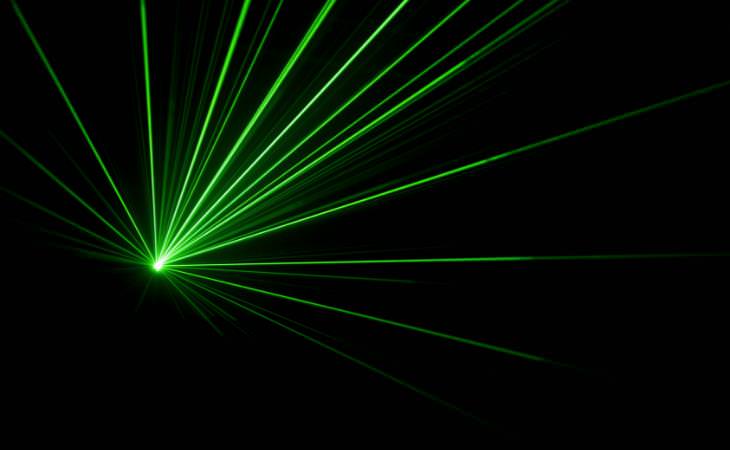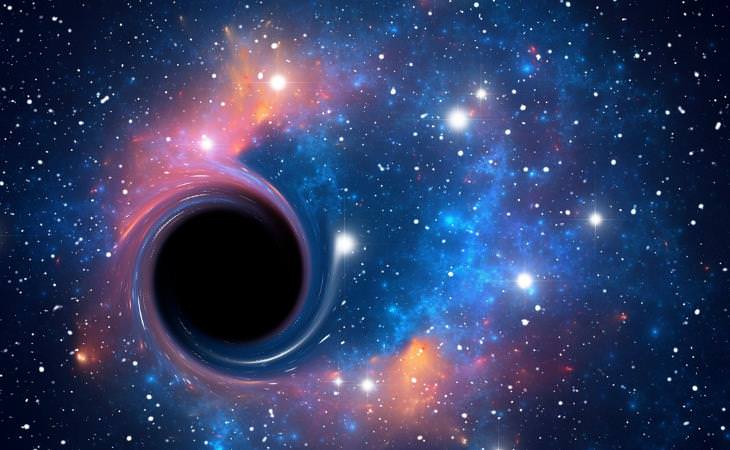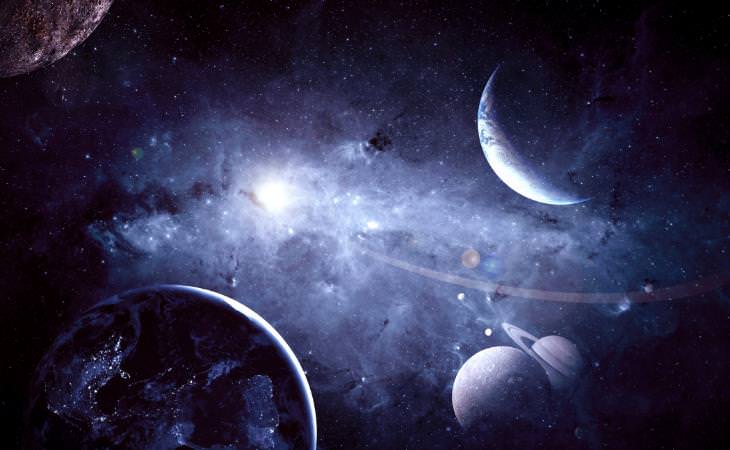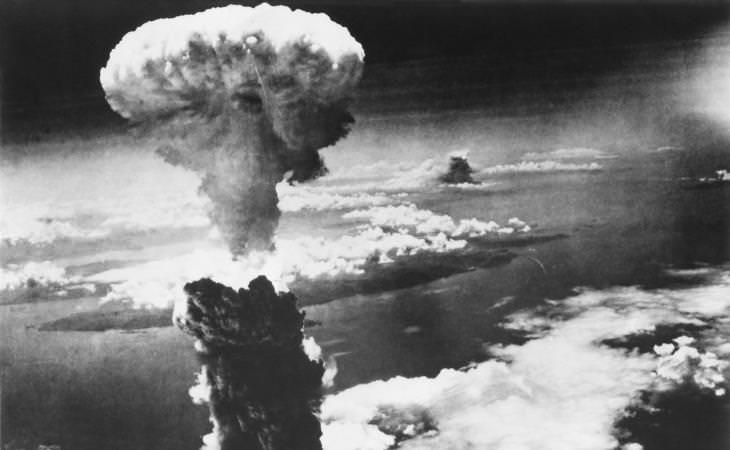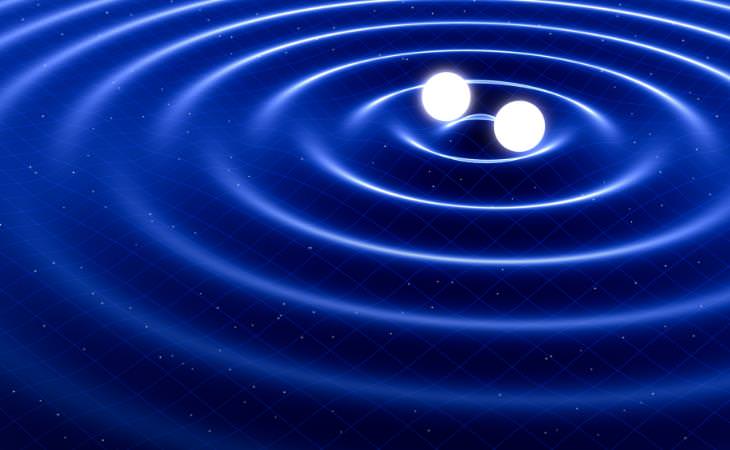1. Space-Time
At the ripe old age of 26, Einstein revolutionized the world of science with his theory of special relativity (not to be confused with the theory of general relativity. More on that in section 4). In his theory, he merges space and time into one single continuum. He demonstrated how they are connected through the speed of light (about 186,000 miles per second or 300,000 km/second).
His theory is mainly based on the universal truth that nothing can travel faster than light. Now, you may ask yourself, how can we say that light moves or travels? And the answer is, light is made of thousands of microscopical particles called photons. Together, they make a ray of light. These photons travel at the speed of light as a stream of particles (and sometimes a wave) and so create what we call light.
The idea of space and time being connected through the speed of light is hard to grasp in the mind, as we measure those with different units, but this theoretic example should clarify:
If a theoretical spaceship traveled in speeds that are approaching the speed of light, to a stationary observer, the spacecraft would seem shorter, and the passengers inside would move in slow-motion. This means they would age slower! You can watch this video that illustrates this idea exactly, through the twin-paradox:
2. E=mc²
We all know this equation by heart without even knowing what it means! This mathematical equation says that the energy of an object equals its mass, times speed of light, squared. This means an object gains mass (becomes heavier) as it moves faster. This principle also works the other around- every stationary object contains vast amounts of locked energy within it.
According to the European Council for Nuclear Research (CERN), if you smash together enough energetic particles, their collision will create even more energy. These ideas are part of the theoretical basis of the atomic bomb, and that is why this equation became so famous: it led to the development of one of the most lethal, destructive, and powerful forces mankind has ever discovered.
3. Lasers
Einstein's work set the basis for the invention of laser beams. Did you know that the word laser is an acronym? It stands for Light Amplification by Stimulated Emission of Radiation. Remember the photons from section 1 of this article? Einstein discovered that a single photon of light passing through a substance could stimulate the emission of further photons.
These new photons are essentially clones of the original one, moving together in the exact same direction, practically creating a precise and controlled ray of light we know as a laser. Here are two examples of how we use lasers in different fields of life such as cosmetic procedures and art. If you want to know more about how lasers work, this video will help.
4. Black Holes and Wormholes
Einstein managed to add gravity into the space-time continuum theory, creating The Theory of General Relativity. He found that massive objects like planets and stars distort the space-time fabric, creating what we perceive as gravity. This explains black holes and how they seem to stretch everything that comes close to them.
Another theoretical space phenomenon that can be explained through the theory of general relativity is the existence of wormholes. They are possible shortcuts from one point in space to another. There hasn't yet been a discovery of one in space, so they are still considered theoretical. Enjoy this short explanation from Neil deGrasse Tyson on these two concepts:
5. The Expanding Universe
Sometimes even the world's greatest genius doubts his own theories. Such was the case in 1915 when his calculations showed that the universe was constantly expanding. His common sense told him this can't be true, so he added some manipulations to the math and the new results showed a steady universe.
But in 1929, astronomer Edwin Hubble (yes, the famous telescope is named after him) deduced from his observations that the universe is expanding in the same way Einstein initially theorized. We now know that this expansion is even increasing in velocity. In other words, an expansion of the universe means all objects in space move further and further away from each other.
6. The Atomic Bomb
Einstein was a pacifist. He knew the destructive potential of the theoretical Atomic Bomb. At the time of his discoveries, it wasn't invented yet. There were many other researchers conducting experiments, and Einstein was just one of many. He wasn't exclusively responsible for the invention of the bomb.
When all the different theories accumulated, scientists and researchers gathered together and sent a letter to US President Franklin Roosevelt. They warned him about their discoveries and the lethal consequences that could be if the Nazi party held this kind of knowledge in their hands. Roosevelt proceeded to establish the "Manhattan project", which resulted in the formation of the first atomic bomb in July 1945. Einstein never took part in the project, but he did take part in the discovery and the warning that lead to it.
7. Gravitational Waves
The legacy truly lives on. Einstein's theory of general relativity can be applied to the universe in many ways. Two of them are the black holes and wormholes (from section 4). The most recent discovery the theory produced is the existence of gravitational waves. They were discovered in 2016. During his time, Einstein fumbled with the idea of those waves in mind but he never made a concrete conclusion about them.
We can tell you that gravitational waves are fluctuations in the gravity coming from the universe. We can tell you that they are tiny ripples that propagate through the fabric of space-time. But these two explanations are too abstract to truly understand, short and accurate as they may be. This short video, though, is sure to clarify everything:



